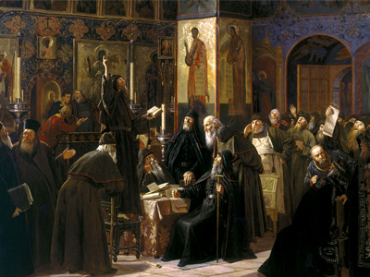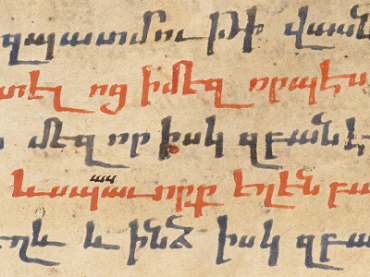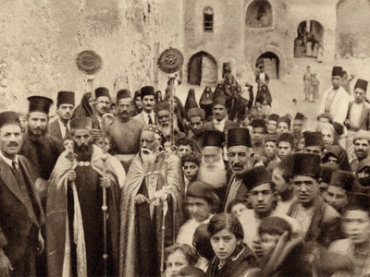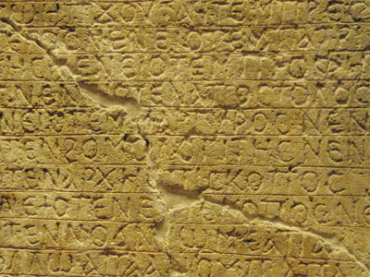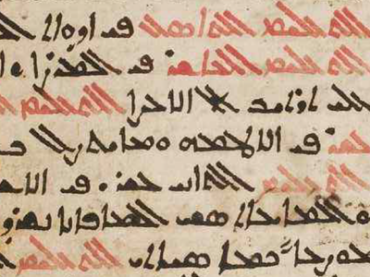Syriac and Eastern Christianity
Themes of Incarnation in the Sedre for the Period of Suboro-Yaldo according to the Mosul Fenqitho
Series: Moran Etho
ISBN: 978-1-61143-579-5
Stephen Plathottathil provides here a study of the liturgical prayers known as sedre corresponding to the portion of the liturgical year from annunciation (suboro) to nativity (yaldo).
$240.00
The Syrian Famine and the Armenian Atrocities
By Therese Philippe Bresse; Translated by P. Anderson
Series: Syriac Studies Library 201
ISBN: 978-1-61143-580-1
Thérèse Philippe Bresse offers a lecture in which she informs her audience of her first hand account of the suffering of Syrian and Armenian people in the early twentieth century and appeals for their help in liberating them.
$89.00
The Life of Rabban Hormizd
and the foundation of his Monastery at Al-Kosh
By Wahle Sergius; Edited with an Introduction by E.A. Wallis Budge
Series: Syriac Studies Library 203
ISBN: 978-1-61143-582-5
E. A. Wallis Budge presents here the Syriac text of a metrical, acrostic work that covers the life of Rabban Hormizd and the foundation of the monastery named after him important within the Assyrian Church of the East tradition.
$165.00
The Monks of Rabban Hormizd
Series: Analecta Gorgiana
ISBN: 978-1-61143-585-6
Arthur Vaschalde provides a brief survey and translation of a manuscript containing historical details about the Monastery of Rabban Hormizd in Iraq.
$33.00
Notulae Syriacae
Series: Syriac Studies Library 209
ISBN: 978-1-61143-592-4
William Wright presents here the Syriac text and English translation of extracts from a manuscript containing a previously unknown recension of the text “Secular Laws of the Emperors Constantine, Theodosius, and Leo.”
$34.00
Collatio Codicum Lewisani et Curetoniani
Cui Adiectae Sunt Lectiones Peshitto Desumptae
Edited by Alberto Bonus
Series: Syriac Studies Library 211
ISBN: 978-1-61143-594-8
Alberto Bonus publishes here the first attempt at collating the variants of the two manuscripts containing the Old Syriac version of the Gospels with the Peshitta. The variants are presented in three parallel columns for easy reference.
$152.00
La Renaissance Études Syriaques
By Félix Nève
Series: Syriac Studies Library 212
ISBN: 978-1-61143-595-5
Félix Nève presents an essay describing the rise in interest in Syriac studies in the nineteenth century based on the potential for further research in biblical studies, patristics, and history.
$138.00
L'Église d'Orient et Son Histoire
D'Après les Monuments Syriaques
By Félix Nève
Series: Syriac Studies Library 213
ISBN: 978-1-61143-596-2
Félix Nève provides here a literature review of publications in Syriac studies that have broader implications for other sub-fields of religious studies, such as biblical studies, patristics, history and linguistics.
$143.00
Zwei Gnostische Hymnen
Edited and Translated by Erwin Preuschen
Series: Syriac Studies Library 214
ISBN: 978-1-61143-597-9
Erwin Preuschen published here the text and translation of two early Gnostic hymns in the Syriac tradition and then discusses the content of the hymns and their implications for our understanding of early Syriac Christianity.
$146.00
Missionary Researches in Armenia
Series: Syriac Studies Library 218
ISBN: 978-1-61143-603-7
The present work is the travelogue compiled from the notes and letters of Eli Smith and Harrison Dwight who traveled to the Middle East to interact with Armenian Christians in the early nineteenth-century.
$219.00
The Religions of Modern Syria and Palestine
Series: Syriac Studies Library 219
ISBN: 978-1-61143-604-4
This volume represents the Bross Lectures given by Frederick J. Bliss in 1908 in which he describes the religious practices of Christians and Muslims in Syria and Palestine.
$175.00
Christians in China
Before the Year 1550
By A. C. Moule
Series: Syriac Studies Library 220
ISBN: 978-1-61143-605-1
A. C. Moule presents here a survey of the sources for Christianity in China prior to 1550 in order to construct a history of Christianity in China prior to the modern missions of the sixteenth century.
$170.00
Barhebräus und seine Scholien zur heiligen Schrift
Series: Syriac Studies Library 221
ISBN: 978-1-61143-606-8
Johann Göttsberger presents a detailed study of Gregory Bar Hebraeus’s Commentary on the whole Bible with special attention to the biblical version(s) that Bar Hebraeus uses for his citations.
$133.00
Le Christianisme des Arabes Nomades sur le Limes
et dans le Désert Syro-Mésopotamien aux Alentours de L'Hégire
Series: Syriac Studies Library 222
ISBN: 978-1-61143-607-5
P. Henri Charles discusses the various forms of interaction between Christians and Arab nomads in the sixth and early seventh-century that led to the rise of a unique expression of Christianity among the nomad tribes.
$155.00
Reise in Syrien und Mesopotamien
Series: Syriac Studies Library 223
ISBN: 978-1-61143-608-2
The present volume is the travelogue of Eduard Sachau, who visited various sites throughout the Middle East in 1879-80. Sachau focuses primarily on issues pertaining to topography and geography.
$214.00
Joannes Bischof von Ephesos
der erste syrische Kirchenhistoriker
Series: Syriac Studies Library 224
ISBN: 978-1-61143-609-9
J. P. N. Land provides here an introduction to John of Edessa, an early leader of the non-Chalcedonian, miaphysite Christian tradition and the first church historian of the Syriac tradition.
$138.00
Concilium Seleuciae et Ctesiphonti Habitum Anno 410
Textum Syriacum Edidit, Latine Vertit Notisque Instruxit
Edited and Translated by Thomas Josephus Lamy
Series: Syriac Studies Library 226
ISBN: 978-1-61143-611-2
T. J. Lamy publishes here the Syriac text of the canons of the Synod of Mar Isaac that met in Seleucia-Ctesiphon in 410 CE at which the Syriac bishops officially accepted the canons of the Council of Nicaea.
$144.00
Die Schatzhöhle
Überlieferung und Quellen
Series: Syriac Studies Library 227
ISBN: 978-1-61143-612-9
Albrecht Götze presents here a study of the transmission history of the text known as the “Cave of Treasures” and the sources used in its compilation.
$149.00
Einiges über die karitative Tätigkeit des syrischen Mönchtums
Ein Beitrag zur Geschichte der Liebestätigkeit im Orient
Series: Syriac Studies Library 229
ISBN: 978-1-61143-614-3
Arthur Vööbus presents here a study of charitable giving among the monks of the Syriac tradition and compares these practices with the monks of the Western tradition.
$136.00
Investigations into the Text of the New Testament used by Rabbula of Edessa
Series: Syriac Studies Library 231
ISBN: 978-1-61143-616-7
Relying on a comparison of Scripture citations in Rabbula’s translation of Cyril with the corresponding texts in the Syriac Peshitta, Arthur Vööbus argues that Rabbula of Edessa was not responsible for the creation of the Peshitta.
$139.00
Untersuchungen über die Authentizität einiger asketischer Texte, überliefert unter dem Namen "Ephrae
Ein Beitrag zur syrischen Literaturgeschichte
Series: Syriac Studies Library 232
ISBN: 978-1-61143-617-4
Arthur Vööbus presents a survey of four ascetic writings attributed to Ephrem the Syrian and compares them with aspects of undisputed works of Ephrem in order to determine their authenticity.
$139.00
Die Massorah der östlichen und westlichen Syrer in ihren Angaben zum Propheten Jesaia
Edited with an Introduction by Gustav Diettrich
Series: Syriac Studies Library 233
ISBN: 978-1-61143-618-1
Gustav Diettrich presents here the edited text of the Masorah of Isaiah, collated from five manuscripts of the Eastern and Western Syriac traditions.
$132.00
Petrus der Iberer
Ein Charakterbild zur Kirchen und Sittengeschichte
Series: Syriac Studies Library 234
ISBN: 978-1-61143-619-8
Richard Raabe presents here the edited Syriac text and German translation of the biography of Peter the Iberian.
$187.00
De Sancta Cruce
Ein Beitrag zur christlichen Legendengeschichte
Series: Syriac Studies Library 235
ISBN: 978-1-61143-620-4
Eberhard Nestle presents here a study of the story of the discovery of the true cross within the Syriac literature tradition.
$157.00
Die außermasorethischen Übereinstimmungen zwischen der Septuaginta und der Peschittha in der Genesis
Series: Syriac Studies Library 237
ISBN: 978-1-61143-624-2
Working from the book of Genesis, Johannes Hänel provides examples of variations from the Masoretic text attested by both the Septuagint and Peshitta and attempts to provide an explanation for the complex relationship between these texts.
$149.00
Filter by
Filter by price
Filter by manufacturer


